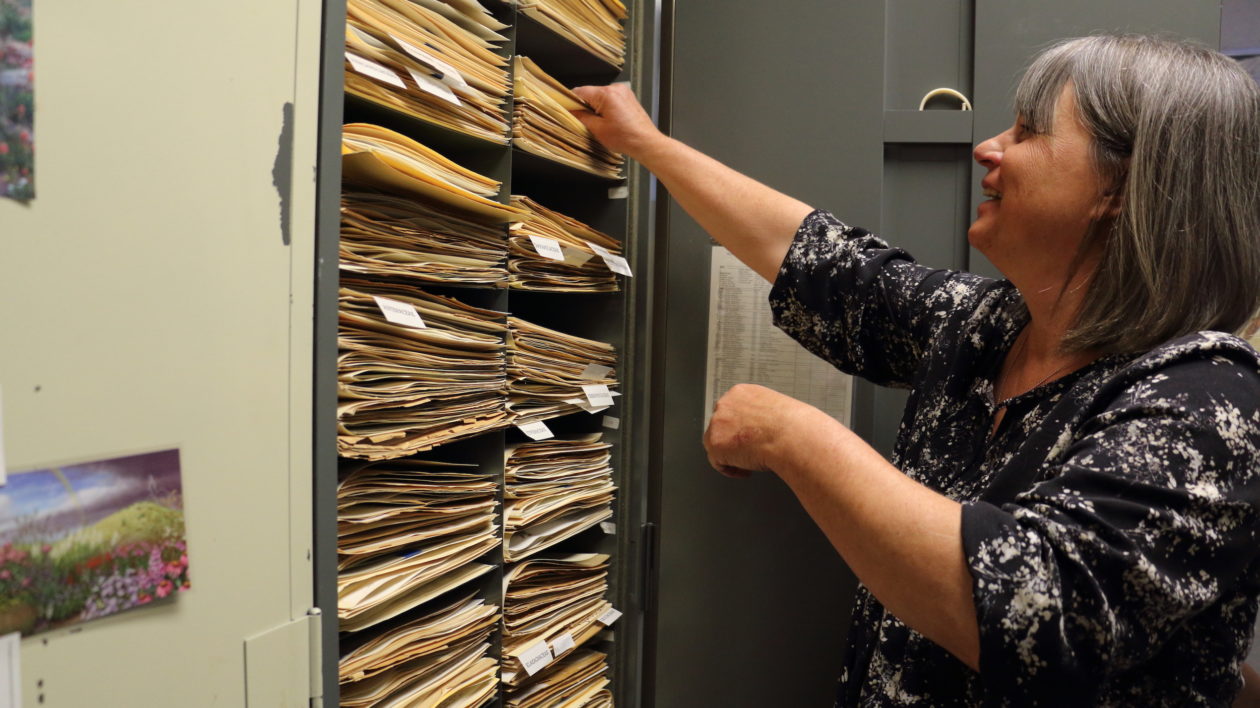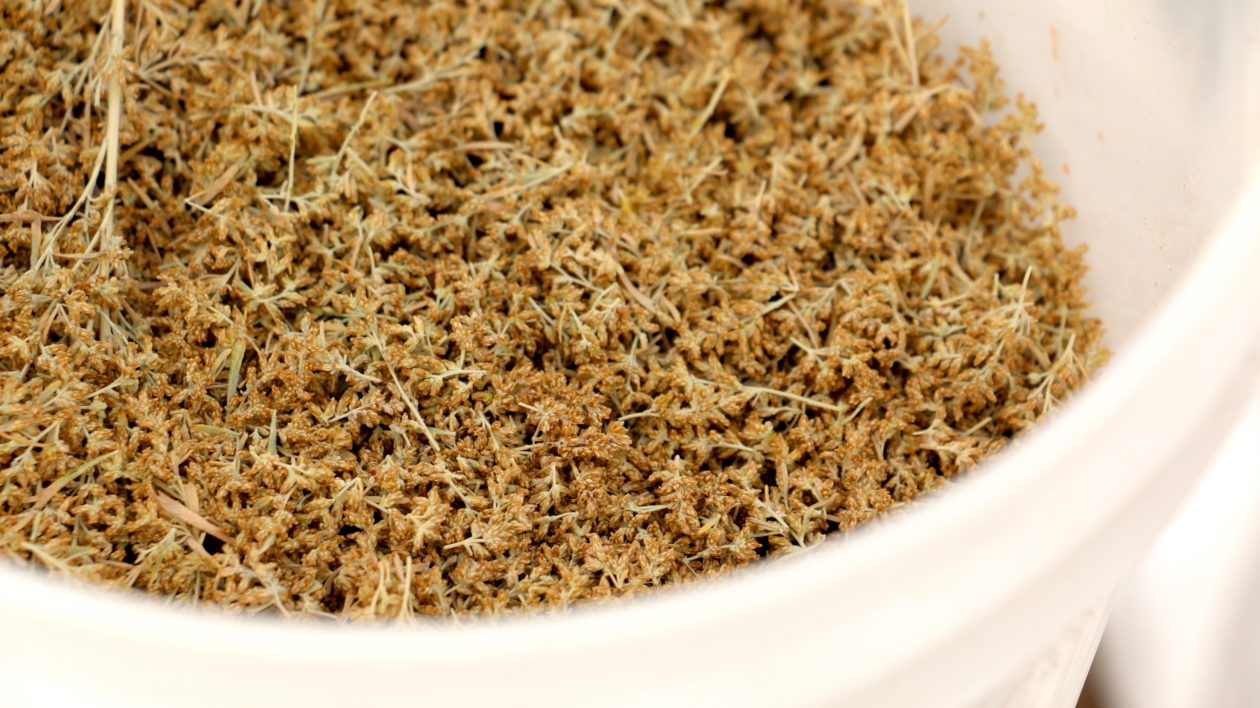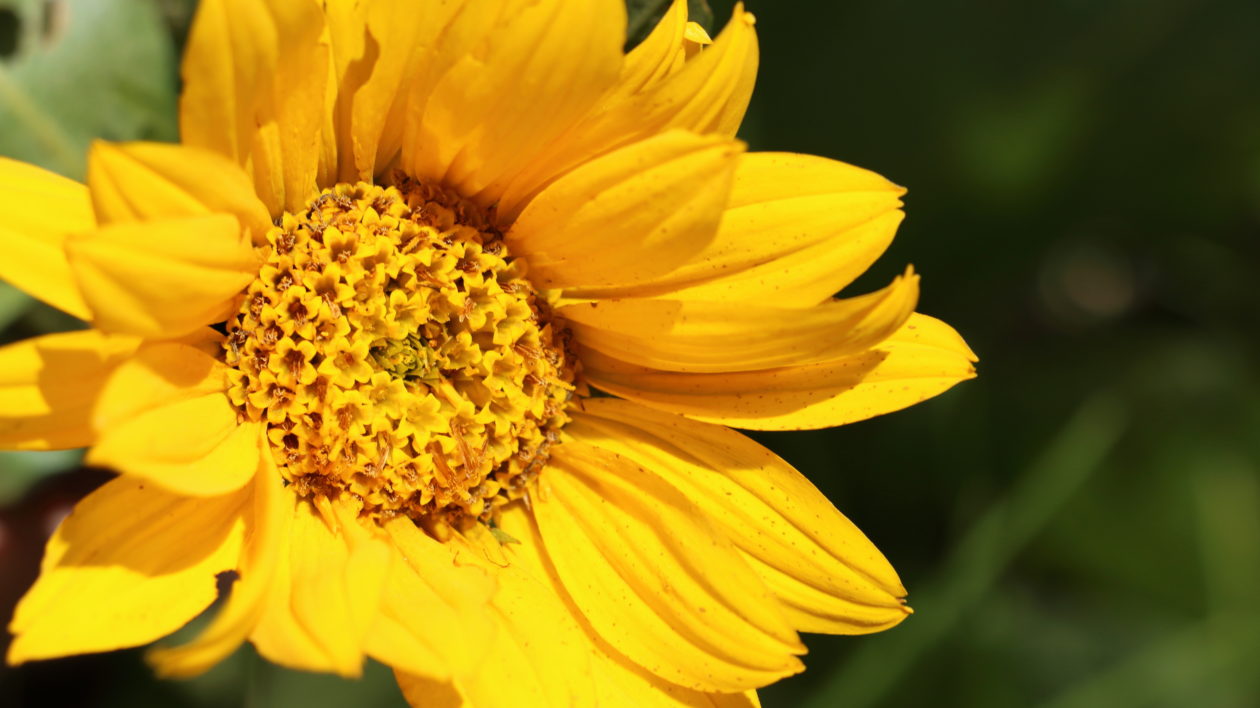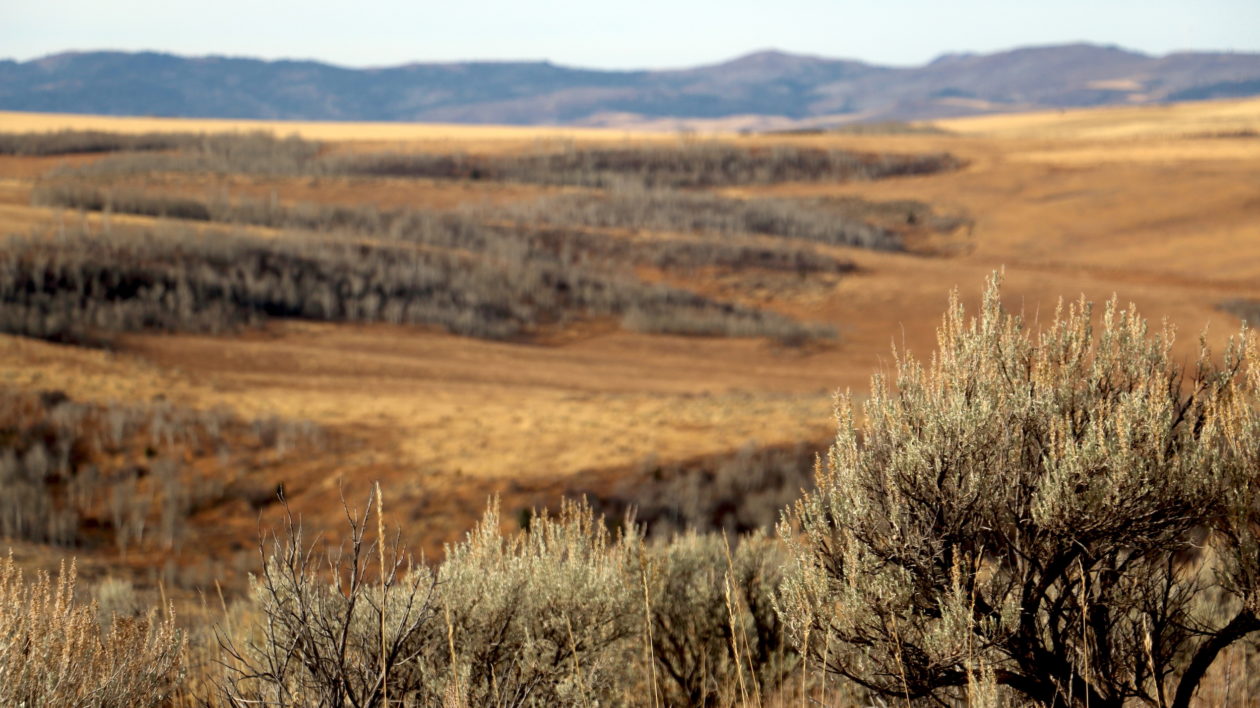I slide my gloved fists along gray stems and golden seeds lift easily. My nose runs just as easily. I’m allergic to sagebrush and we’re wallowing in a sea of it. Our family’s holiday giveback this year is collecting sagebrush seed. The 100 pounds we help collect in an unburned section of Idaho’s Tex Creek Wildlife Management Area (WMA) will turn into seedlings for a burned section of the same WMA. Wildfire blackened nearly 75 percent of the refuge in 2016.
Sagebrush is quick to burn and slow to grow, so sharing seed boosts re-vegetation. Saving seed holds value too. That’s what Rose Lehman is explaining to me as we strip seeds. She’s a botanist for the U.S. Forest Service and has a herbarium (pressed plant collection) at her office.
“It’s basically a living library,” Lehman says. “Well, a book of things once living.”
The herbarium she keeps contains more than 1,000 species of plants found in Caribou-Targhee National Forest. It’s three standing-cabinets tall and every shelf is stacked with what was once living in eastern Idaho. It smells like dried herbs and dust. The sage samples in the collection are older than my grandma.
“Some samples were collected more than 100 years ago,” Lehman says. “There are old specimens for quite a few different things. It gives you an idea of where things are at now.”

Trevor Bloom is one researcher very interested in what’s happening now. He’s more interested in collection time than collection amount. He’s a phenology scientist for The Nature Conservancy in Wyoming. Conservancy conservation scientist Corinna Riginos started Bloom’s research, but he’s now on the ground. He studies the seasonal timing of ecological events: when birds migrate, bears hibernate and sagebrush blooms.
“Seed collection is extremely valuable to conservation,” Bloom says. “We may be losing some of these species at a faster rate than we understand. If we don’t have a seed bank, we might not ever be able to restore those.”
Bloom references herbariums nationwide via online database scans, but the actual process of collecting plants and pressing them between pages to make that database hasn’t changed much since the old-world ways of Henry David Thoreau and even father back, Lewis & Clark.

Comparing those collections to modern-day observations is intriguing. Comparing newer collections, like one from the 1970s, to today is beyond intriguing. It’s alarming. Multiple plants are weeks ahead of their documented bloom times of just 40 years ago.
“Even the timing of sagebrush, one of latest flowering species, is linked to the timing of snowmelt,” Bloom says. “As snow melts earlier, sagebrush is beginning to flower earlier as well.”
Naturalist Frank C. Craighead Jr. documented 250 plant species near Jackson, Wyoming from 1973 to 1979. He recorded first flowering date for three years on 49 of the 250. Bloom’s team started recording first flowering date for those same 49 in 2016. More than half are blooming before they used to. Not just by a few days, but by several weeks.
“There’s reliable data that supports these flowers being unchanged until the 1970s so it’s reasonable to say this data from the 1970s is a pre-climate-change baseline,” Bloom says. “That wasn’t that long ago.”

Balsamroot is one of the 49. Its hand-sized, sunshine-bright bloom chasing snowmelt is a welcome sight, but it’s displaying earlier than ever. Balsamroot bloom used to start May 30. Now it starts May 10. That’s 20 days ahead of what Craighead recorded in the 1970s.
“What’s really powerful about this project is it clearly demonstrates that not only is climate change going to affect the world, it already is,” Bloom says. “It’s happening now.”
Plants are shifting, which leads Bloom to wonder what will shift next. The worry is it won’t be animals. Migration is motivated by length of day. Plant growth is motivated by temperature and snowmelt. Those two factors are changing, but length of day isn’t. Bloom worries mismatched timing due to shifting variables could become so great, migrators will start arriving after their food source has already peaked.

Think of the implications of that. Spring starting nearly a month early. Nectar spent before summer when pollinators show up to dip into it. Berries heavy in summer instead of fall when bears need them most for pre-hibernation bulk. On it goes with the ball already rolling based on dates attached to what’s dried in a herbarium from decades ago and what’s living on the landscape today.
“I don’t think climate change is the end of the world, but the first step is just to take it seriously and understand that it’s happening,” Bloom says. “That’s why I like this project. You can stand where a great scientist stood 40 years ago and see that it’s already changed. It’s pretty hard to dispute that.”
Craighead’s findings from the 1970s are published in the book For Everything, There Is a Season. Bloom’s current study is titled For Everything, There Was a Season.




Nicely put. Thanks for the great article Kris. If you are interested in more of our research highlighted in this article please see the webpage for the project: nature.org/wildflowerwatch or email me at trevor.bloom@tnc.org